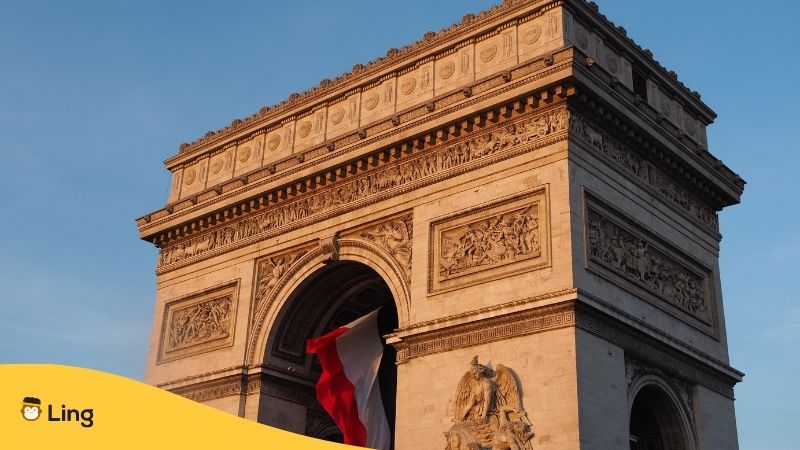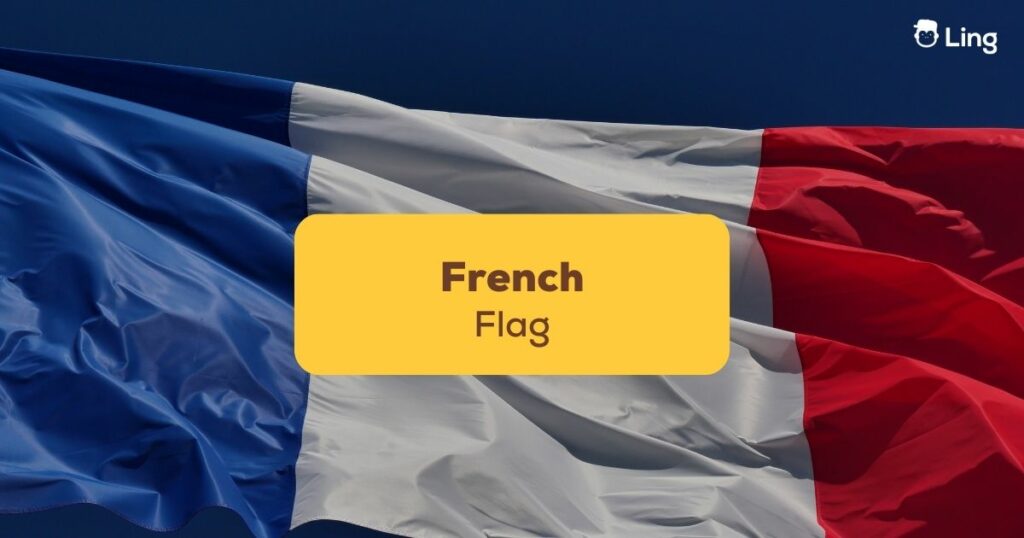Among all the flags in the world, we cannot deny that the French flag is an instantly recognizable national emblem. Many countries have three colors on their national flag, but the term “tricolor” flag is as French as berets, baguettes, and the Eiffel Tower. Want to learn more about this? In this post, we’ll closely examine this iconic symbol, its history, and the meaning behind its red, white, and blue stripes. Let’s begin!
Flags are more than just pieces of cloth on poles. Instead, it’s like a country’s wardrobe, showcasing its unique style and personality. Whether it’s the colors, patterns, or symbols, each flag tells a story about a country’s history and culture. So if you’re learning a language like French and would like to understand it better, we highly recommend that you know a thing or two about the flag to understand better the locals and the language itself. Ready to dive into that? Keep reading below!
A Brief History Of The French Flag
In this section, we’ll go over how the official flag of France reflects the country’s evolution as a nation and the struggles and triumphs that have shaped its identity. But before all that, let’s focus on a few key terms related to this topic.
| English Word | French Translation |
|---|---|
| Flag | Drapeau |
| National anthem | Hymne national |
| Pledge of allegiance | Serment d’allégeance |
| Emblem | Emblème |
| Colors | Couleurs |

Ready to dive right into history? Keep reading below!
The Oriflamme And Fleurs De Lis
In the early days of the middle ages, the flag of the martyr Saint Denis was adopted as the red banner under which the Capetian kings would go to war. Later, the House of Valois started hoisting its coat-of-arms – gold fleurs de lis on a blue shield background.
The Hundred Years’ War
As the French and the English started decades of fighting, the French king and armies rode into battle under a white cross on a blue background against the English, whose banners featured a red cross on a white background. Later French flags would feature the color white prominently because white is associated with the white flag of Joan of Arc, the defender of France and a patron saint who was burned at the stake by the English and is the color of the French royal family.
The French Revolution
During the bloody revolution, the iconic tricolor was adopted as the flag of France. A circular blue and red cockade was worn on the hats of the french militia and later the National Guard, representing the colors of Paris, and was prominently displayed during the storming of the Bastille. The white stripe was added by Lafeyette, who suggested it would better nationalize the design. In 1790, the Constituent Assembly approved a national flag with vertical red, white, and blue stripes, and in 1794 the decision to reverse the colors of the French tricolor flag to blue, white, and red.
Defeat Of Napoleon
In 1815, when Napolean was overthrown and the Bourbon dynasty restored to the throne, the tricolor flag was replaced by a plain white flag, the old flag of the French navy. This was a short-lived decision, and the blue, white, and red flag was restored in 1830 by Louis Philippe following the July Revolution. It has remained the national flag of France ever since.
When Henri Comte de Chambord was considered for the French throne after the overthrow of Napoleon III, he said he would refuse unless the tricolor were again replaced with a white flag. This never came about, however, as the restoration of the monarchy was considered a bad idea, and it was decided that a French republic would be a better idea.
World War II
Although the France flag remained the tricolor under the Vichy regime, a symbol of a French throwing axe was imposed onto the white stripe by Philippe Petain. Similarly, the Free French Forces retained the traditional colors of the national flag but added a red Cross of Lorraine onto the central white stripe of the national flag.
Today the red, white, and blue colors are featured on naval and regimental flags.
Influence Of The French Tricolor Flag
Because the French flag represented liberty, equality, fraternity, modernization, secularism, and democracy following the French Revolution, many European countries decided to copy the tricolor idea while replacing the red, white, and blue vertical stripes with red, white, and blue stripes their countries own colors. Many of France’s former African colonies also replaced the French design with their colors following independence. Today, the Constitution of the Fifth Republic has the French flag as the only national emblem, defined in Article 2. The flag of France can be seen hanging from public buildings such as town halls, and the three vertical bands of the French flag can be seen flying at most official ceremonies.

Changes To The French Flag
In 2020, the French president, Emmanuel Macron, made the flag’s colors flying over the Elysee Palace a slightly darker hue. This was reportedly done to represent the flag of the French Revolution better. Although the move drew positive and negative comments, it is generally agreed that the lighter and darker shades are acceptable and interchangeable.
On Television
When the French flag is used as a backdrop to interviews on French television, the central vertical white stripe of the state flag is made narrower than the blue and red stripe so that close-up shots will not just have a white background.
French Navy
To make the width of the three colors of the France flag appear equal, the French navy changest the proportions of the colors. The three colors are proportioned 30 percent blue, 33 percent white, and 37 percent red. If this isn’t done, when the flag flaps, it appears that the stripes get smaller the further they are from the flagpole.
Paris Attacks
Following the Paris attacks of November 2015, many monuments, stadiums, public buildings, and national landmarks were illuminated in blue, white, and red stripes as a sign of national unity and to honor those who lost their lives.
Keep Your Language Learning Flag Flying With Ling

The history of the French flag is the history of the French people. If you are keen to learn more about the French language and culture, plenty more blogs can be found here on the Ling app. But if you want to master the French language and speak it like a native speaker, you must try out Ling!
Ling is one of the world’s leading language-learning apps and features lessons for more than 60 languages. Learning with Ling is made fun and easy with games and quizzes. Why not give Ling app a go today by clicking on Google Play or App Store?



































































